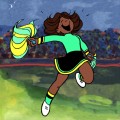Developing Goals For Your Child With Special Needs: Where To Begin?
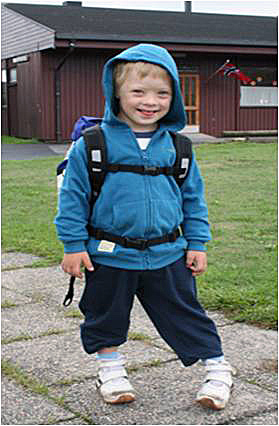
Having a child start school is a big moment for every parent, but it can be even more daunting for parents of children with special needs, especially when it comes time to plan goals with their teachers. Where do you begin? What do you want your child to learn? What skills do you want your child to develop? Here I write about the five main areas I consider when planning goals for my students with special needs that will hopefully provide a useful starting point to parents and also other teachers. My students are aged 5-8 and have moderate to severe intellectual disabilities, but this article may also provide information for parents of children of other ages and with other special needs.
1. Communication
Communication is a vital area to consider when planning goals for your child with special needs as it links to the other areas, particularly behaviour. Many challenging behaviours occur when a child does not have an effective means to communicate as being unable to express his or her needs or wants can be incredibly frustrating. These challenging behaviours can prevent learning and skill development in other areas.
Communication is often equated to speaking. Whilst speaking is a form of communication, children who do not speak can also be taught to communicate by other means. When planning a communication goal for your child, first consider the method they will use. There are a variety of options you should discuss with your child’s teacher, who should be an expert! You will need to do some research to determine which methods may work best for your child beforehand. I won’t go into detail about these here (maybe I’ll write an article on this if there’s demand) but you should look into (Picture Exchange Communication System [check out my hub on this topic]), signing, communication devices and iPad apps such as Proloquo2Go. Once you have a bit of an idea of what communication systems are available you have a starting point to develop some goals. Here are some ideas:
· Making a choice between two tangible objects
· Learning the signs for help, more, eat, drink and toilet
· Exchanging a PECS picture card for a desired object
· Using a BIGMack communication device to ask for more food
· Pointing to a desired object that is out of reach
It is important to know which communication method/s your child is using so you can use it at home as well. If your child is using PECS only at school it will be very difficult for him or her to generalise this and use it in other settings if it’s not being used at home at the same time.
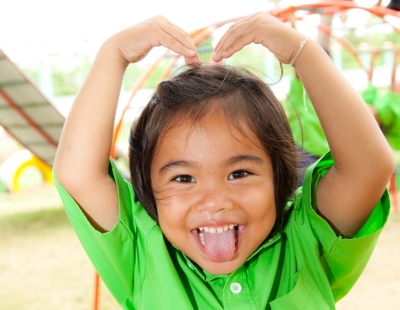
2. Behaviour
Many students with special needs display challenging behaviours for a variety of reasons. These challenging behaviours often get in the way of working towards other goals so it is important these are dealt with as soon as possible. Challenging behaviours don’t just include aggression by the way. Challenging behaviours can also be other things such as absconding, climbing, not being able to sit on a chair for a set period of time, spitting, throwing items and much more.
There are a few important things to know when setting behaviour goals. Before you even start setting a goal you need to work out what is causing the behaviour. You can’t eliminate or replace a behaviour if you are not sure what is causing it. Some common causes include not being able to communicate successfully, having sensory issues such as auditory hypersensitivity, or having a constant desire for attention. Once you know what is causing a behaviour you can work with your child’s teacher to develop strategies to help extinguish the behaviour or replace it with something more appropriate.
When you’re ready to create a behaviour goal, it is important the goal describes what you WANT your child to do, not what you DON’T want them to do. For example, instead of setting a goal such as Brendon will not kick others, you could set something like when feeling frustrated, Brendon will squeeze a stress ball. You haven’t gotten rid of the Brendon’s frustration, but you are teaching him a more appropriate way to deal with it.
It is also important to focus on one behaviour at a time. It’s good to choose the behaviour that is the most dangerous to your child or other people first. For example, I would work on an aggressive behaviour before working on book-ripping.
Don’t expect challenging behaviours to be reduced or eliminated in a short period of time. Often they need to be worked on for a long period of time before there is improvement. Also consider whether it is realistic to want the behaviour to be extinguished altogether, or if it is more realistic to expect the number of occurrences of the behaviour to be reduced instead.
Here are some examples:
· Using a picture card to request a break
· Seeking the teacher’s attention by raising a hand
· Only ripping books and papers that are labelled OK to rip
· Communicating pain by using the sign for hurt
· Sharing a favourite toy with another student
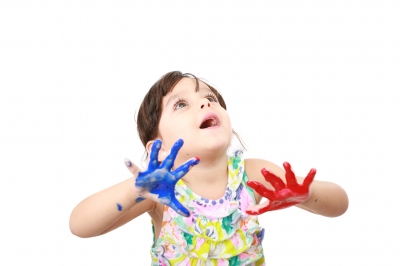
3. Self Care
Being able to care for oneself encourages independence and provides dignity. Many students with special needs may need a carer for the rest of their lives, but they can still learn some skills so they can play a role in looking after themselves. There are four main areas I look at when planning self-care goals for my students.
The first is toileting. Most students at my school start Kindergarten still in nappies. Toileting-training students has so many benefits. Not only does it save parents a lot of money on nappies, it also gives the student more independence and control over their lives. The ultimate goal of toilet-training is for the student to recognise when he or she needs to go to the toilet and communicate this need, e.g. by walking to the toilet or telling a teacher. Some students will not get to this level but they may do well with toilet-timing, which is where they are taken to the toilet regularly by an adult and they are able to hold on between these visits. This is still a great achievement, as is the development of skills in any steps of the whole toileting process. Even if a student can pull their own pants down and sit on the toilet they are still playing a role and having some input into their own self-care regime.
The next self-care area is general hygiene. This includes things such as washing hands, showering, washing hair and brushing teeth. Good personal hygiene is good for everyone, but some students with special needs do not understand this, and have little or no awareness of why and how to stay clean. From an early age we need to start teaching them good hygiene practices that will keep them clean and healthy throughout their lives.
The third area is eating and drinking. Students with special needs may experience problems in this area for a variety of reasons. It may be a cognitive issue or it may be a physical one. The problems may range from having difficulty using a fork, knife or spoon to eat, to having anxiety about trying new foods, to not understanding feelings of hunger and thirst. In extreme cases this can lead to malnutrition, hence it is important for children experiencing difficulties in eating and drinking to have goals related to this area.
The final self-care area is dressing. Many teachers and parents find it easier to dress children with special needs than teaching them how to do it themselves. Sometimes it is not possible for children to learn to dress themselves due to having a severe physical disability for example. However, even children with a severe intellectual disability can learn steps to help dress themselves more independently. When setting a dressing goal you must first consider the steps needed to complete a task. You can do this by doing the task yourself and writing down exactly what you do each step. Once you have developed a list of steps needed to be taken you can focus on starting to teach the task. I like to use “backward chaining,” which involves doing all of the steps for the child except the last one which they do themselves. Once they have mastered this final step you then move on to getting them to complete the last two steps and so-on. Don’t make the goal for the child to complete a whole dressing task to begin with.
Some examples of self-care goals:
· Flushing toilet after using it
· Drying hands on towel after washing them
· Using a spoon to eat mashed potato
· Pulling shorts up to waist
· Selects a t-shirt to wear
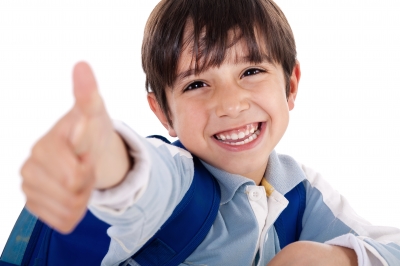
4. Social Skills
Three of the most basic social skills children need to learn are playing, sharing and turn-taking. I like to write goals focusing on these areas before looking at some of the more complicated social skills such as conflict resolution, politeness and leadership.
In the 1920s Mildred Parten observed children playing and came up with six different categories to describe their different types of play. Goals for your child will vary depending on the type of play they currently participate in. My play goals for my students normally involve moving them to the next level of play to the one they are currently at. A lot of the children who start at my school are at the first level of play: Unoccupied play. This is where they are fairly still and do not appear to be engaged in anything of purpose. I try to teach them to participate in meaningful play activities for personal enjoyment, whether it be playing with a toy, a ball or something else. Over time the goals can develop so that the student is eventually playing with other students. It is important to note, however, that many students will not reach this level, and participating in any type of play at any level is still an achievement.
Once children are engaging in play activities, the skills of sharing and turn-taking become important. Many arguments occur between children fighting over the same toy and lots of challenging behaviours, including aggression, can be displayed. It’s important not to just expect your child to learn how to share, and accept waiting their turn. Instead of making a general goal such as “learning to share” try to think of a smaller “stepping stone” goal that works towards this ultimate goal.
Some examples of social skills goals:
· Allowing another child to play with a preferred toy for x seconds (start small, say five seconds)
· Playing “catch” with another student for x seconds (again, start small, say 15 seconds)
· Saying “my turn” when it is their turn in a board game
· Participating in a meaningful, solitary play activity for x seconds
· Playing next to another student for x seconds
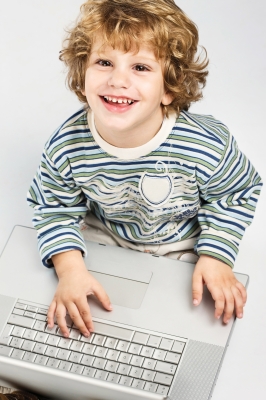
5. Academic Learning
The final area to consider when planning goals for your child is Academic learning. Many of the parents I work with often ask what is the point of doing traditional academic work with children who have a moderate or severe intellectual disability, and is it realistic to expect them to make progress in this area. My answer to this is that academic learning isn't just about learning to read and count. Every child has the right to access the syllabus, and it’s our job as teachers to adapt the syllabus to meet their needs. Let me give you an example. An outcome from the New South Wales Mathematics Syllabus for Kindergarten children is: Uses everyday language to describe position and give and follow simple directions. A child with an intellectual disability can still work towards this outcome. They may show they are working towards this outcome by being able to follow simple directions involving position, for example, “places lunch box ON the table when asked.” Another example: An English syllabus outcome is: Demonstrates developing reading skills to read short, predictable written texts on familiar topics. Some people argue a young child with an intellectual disability will be unable to meet this outcome as they cannot be taught to read. However, the student might use a visual timetable. Looking at this timetable is still reading. It doesn't have to be a traditional picture book for it to be reading.
Some examples of academic learning goals:
· Packing belongings into bag (Maths: Position)
· Filling a cup with water (Maths: Measurement)
· Greeting the teacher by waving (English)
· Tracing a straight line (English)
· Selecting a picture card to describe the weather (Science)





